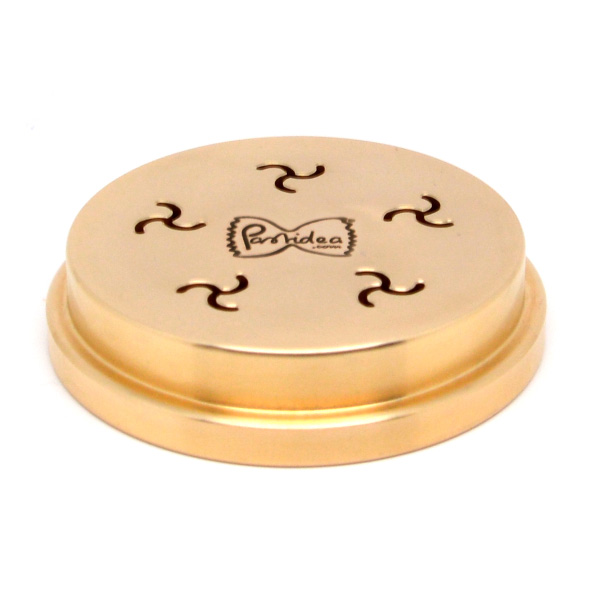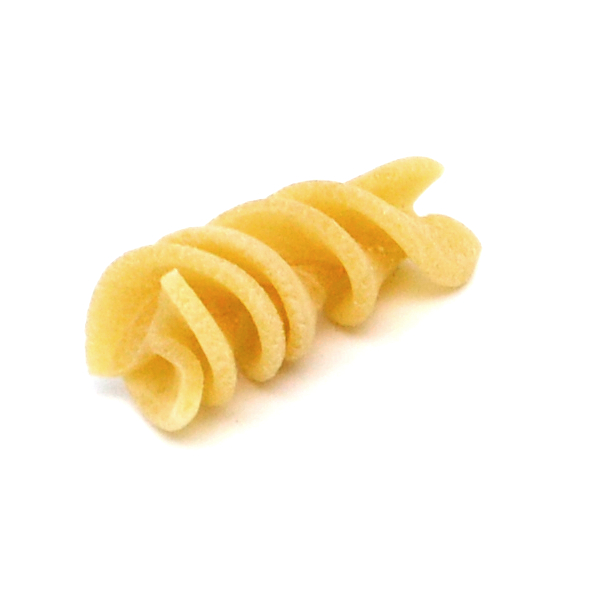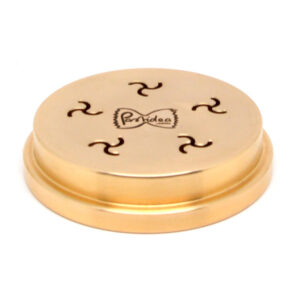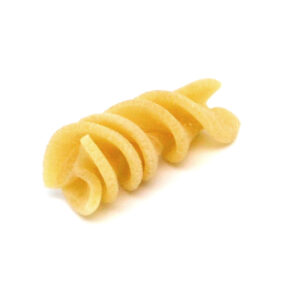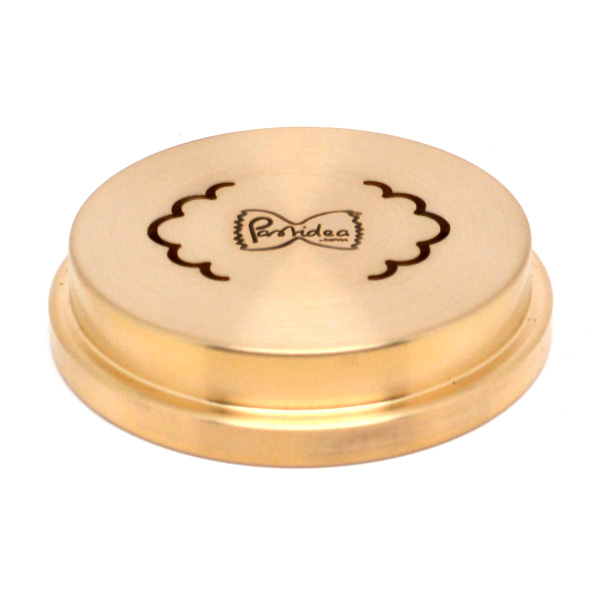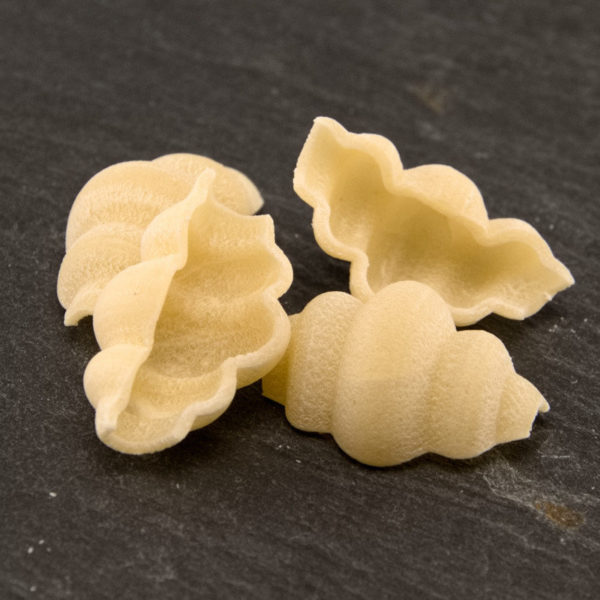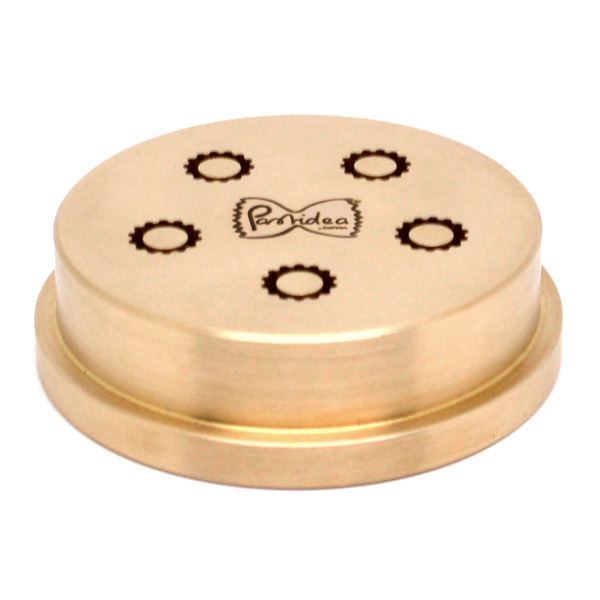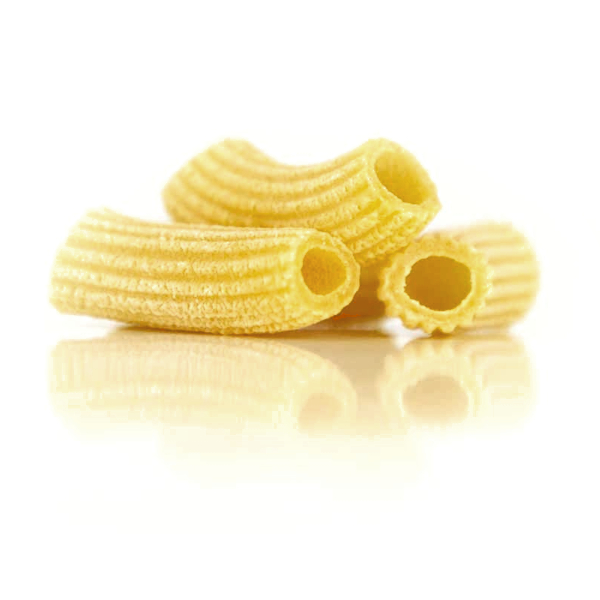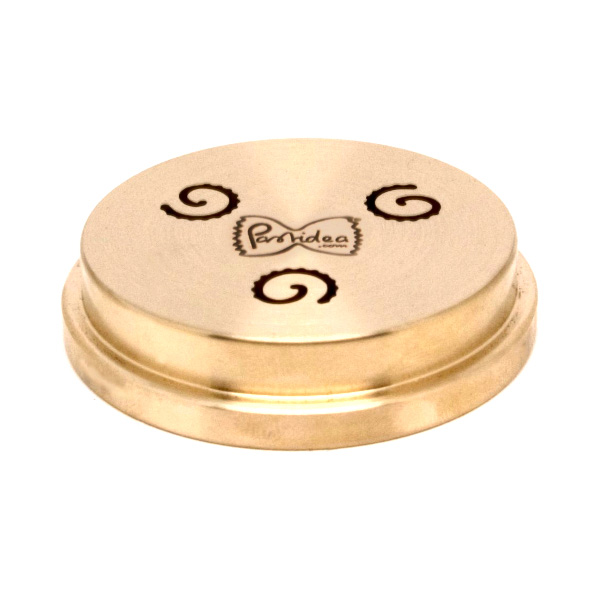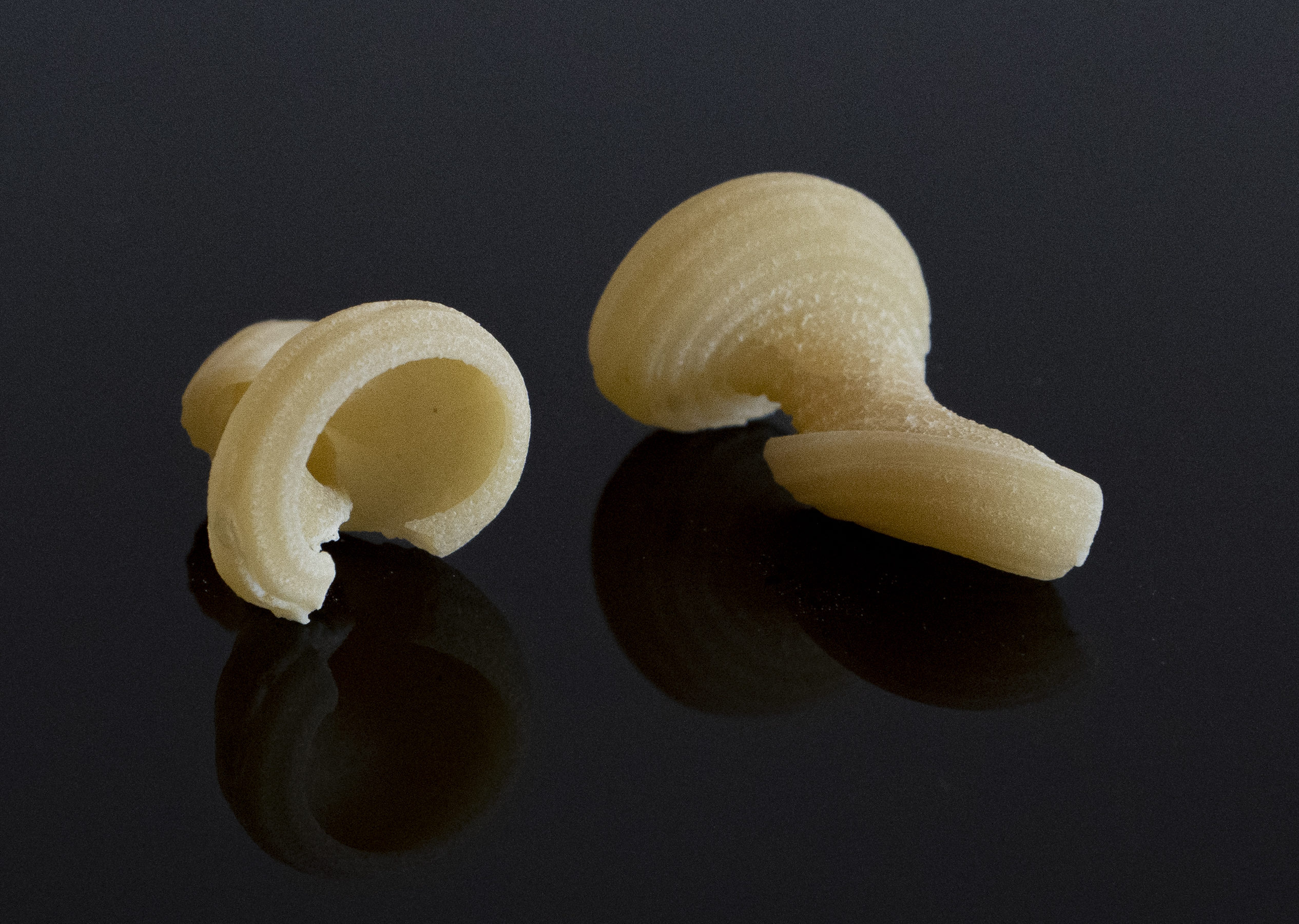Bronze die Fusilli A3 10mm for La Fattorina VIP2, VIP4, Fimar MPF 2.5, MPF 4, PF25E, PF40E, NMF8
52,40 € incl. VAT plus shipping costs
Bronze die Fusilli A3 10mm for La Fattorina VIP2, VIP4, Fimar MPF 2.5, MPF 4, PF25E, PF40E, NMF8
52,40 € incl. VAT plus shipping costs
EAN: 806891200822
Bronze die Fusilli A3 10mm
One of the most famous noodles in Germany is fusilli. They are often called Spirelli, Rotini and rarely Eliche.
The word fusilli comes from the Italian word “fuso”, which means spindle. In manual fusilli production, spaghetti is still wrapped around a spindle.
According to legend, fusilli were invented at the court in Florence around 1550. The cook's son sat under the kitchen table and played with fallen pasta scraps that he wrapped around a knitting needle. These were the first fusillis.
Not quite as clear, but much more likely, is the story that the Fusillis originated in southern Italy. At some point, spaghetti began to be rolled up in a spiral for drying, as the rotation made it much easier to dry and store.
What is undisputed is that the twists mean that the sauce combines particularly well with the pasta. Fusillis are easy to dry.
Fusillis are available with 2, 3 or 5 wings. You can see how many propeller blades the Fusilli has by the die shape and also the die name. Ie a Fusilli A2 has two wings, an A3 has 3 wings, an A5 has 5 wings.
Size: 10 mm
Thickness: 1,1 mm
Diameter of die: 63,5 mm
Pasta insert for the following professional pasta machines:
La Fattorina VIP2
La Fattorina VIP4
Fimar MPF 2.5
Fimar MPF 4
Fimar PF25E
Fimar PF40E
Fimar NMF8
No adapter or similar is required. The die fits directly into the above-mentioned pasta machines.
Why bronze:
Bronze dies were the traditional way of making pasta. The pasta made “al bronzo” can only be found rarely and usually only in selected delicatessens.
By pressing the pasta dough through the bronze matrices, the surface of the pasta is slightly roughened at the same time, making the pasta easier to grip. This allows the pasta to better absorb the sauce, flavors and spices later on. Would you like to learn more about bronze matrices? Then we recommend this article to you here.
Recipe:
It is recommended to use durum wheat semolina, enough cold liquid such as water and/or egg. The dough should be kneaded for about 8-10 minutes, this is the only way the gluten from the durum wheat can fully develop. The result should be a moist, crumbly dough. You can find a standard recipe for our matrices here.
The matrices can also be used to produce gluten-free pasta.
Storage:
Do you have several bronze matrices and are looking for storage to protect the matrix from dust and darkening caused by light? Then we recommend our storage systems to you here .
Bronze die Fusilli A3 10mm
One of the most famous noodles in Germany is fusilli. They are often called Spirelli, Rotini and rarely Eliche.
The word fusilli comes from the Italian word “fuso”, which means spindle. In manual fusilli production, spaghetti is still wrapped around a spindle.
According to legend, fusilli were invented at the court in Florence around 1550. The cook's son sat under the kitchen table and played with fallen pasta scraps that he wrapped around a knitting needle. These were the first fusillis.
Not quite as clear, but much more likely, is the story that the Fusillis originated in southern Italy. At some point, spaghetti began to be rolled up in a spiral for drying, as the rotation made it much easier to dry and store.
What is undisputed is that the twists mean that the sauce combines particularly well with the pasta. Fusillis are easy to dry.
Fusillis are available with 2, 3 or 5 wings. You can see how many propeller blades the Fusilli has by the die shape and also the die name. Ie a Fusilli A2 has two wings, an A3 has 3 wings, an A5 has 5 wings.
Size: 10 mm
Thickness: 1,1 mm
Diameter of die: 63,5 mm
Pasta insert for the following professional pasta machines:
La Fattorina VIP2
La Fattorina VIP4
Fimar MPF 2.5
Fimar MPF 4
Fimar PF25E
Fimar PF40E
Fimar NMF8
No adapter or similar is required. The die fits directly into the above-mentioned pasta machines.
Why bronze:
Bronze dies were the traditional way of making pasta. The pasta made “al bronzo” can only be found rarely and usually only in selected delicatessens.
By pressing the pasta dough through the bronze dies, the surface of the pasta is slightly roughened and the pasta becomes more grippy. This allows the pasta to absorb the sauce, flavors and spices better later.
Recipe:
It is recommended to use durum wheat semolina, sufficiently cold liquid such as water and/or egg. The dough should be kneaded for about 8-10 minutes so that the gluten from the durum wheat can fully develop. The result should be a moist, crumbly dough. We recommend the following standard recipe for our matrices:
Ingredients:
250 g durum wheat semolina or Semola rimacinata
Choose ONE of the following ingredients:
100 ml cold water or
Lightly whisk 110 ml of liquid consisting of two eggs, the rest of the water
Patterns:
Please only use cold liquids.
Avoid flour, replace it with semolina.
Use binding agents such as xanthan gum, gluten, etc. only to a limited extent, a maximum of 1 teaspoon per 500 grams of dry ingredients. Otherwise the dough will be too firm and the dies could break.
If you knead the dough for longer or let it rest, the gluten will develop on its own.
You can recognize a good pasta dough by the fact that it is moist and crumbly.
The matrices can also be used to produce gluten-free pasta.
Storage:
Do you have several bronze matrices and are looking for storage to protect the matrix from dust and darkening caused by light? Then we recommend our storage systems, which you can find in our range.

